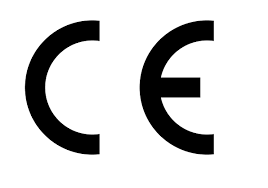Understanding the Differences Between Equine Castrators and Emasculators
In the world of equine care, the terms castrator and emasculator often surface, especially when discussing procedures that involve gelding horses. While both tools play pivotal roles in the process, they are not interchangeable and serve distinct purposes. This comprehensive guide aims to demystify these tools, highlighting their differences, uses, and significance in equine health management.
Introduction to Equine Castration
Equine castration, commonly known as gelding, is a surgical procedure that involves the removal of a horse's testicles. This practice is typically performed to make male horses, known as stallions, more manageable and less aggressive, transforming them into geldings. The process also prevents unwanted breeding.
What is an Equine Castrator?
An equine castrator is a general term for any tool or device used to remove the testicles during the castration procedure. The castrator is designed to ensure that the process is efficient and minimizes the risk of complications.
Types of Castrators
- Burdizzo Castrator: This device crushes the spermatic cords, cutting off the blood supply to the testicles without breaking the skin. It is often used in cases where an open surgical procedure is not preferred.
- Scalpel Castrator: A more traditional method, using a scalpel to make incisions and remove the testicles directly. This method often requires more post-operative care to prevent infection.
What is an Emasculator?
An emasculator is a specialized surgical instrument specifically designed for equine castration. It combines the functions of cutting and crushing the spermatic cord, which helps in minimizing bleeding during the procedure.
Types of Emasculators
- Reimer Emasculator: Features a ratchet mechanism that allows for precise control during the procedure, ensuring that both cutting and crushing are performed simultaneously.
- Serra Emasculator: Known for its durability and effectiveness, it provides a strong crush and clean cut, often used in larger equines.
Key Differences Between Castrators and Emasculators
Understanding the differences between these tools is crucial for equine practitioners and horse owners. Here are the primary distinctions:
| Feature | Castrator | Emasculator |
|---|---|---|
| Function | General term for testicle removal | Combines cutting and crushing |
| Usage | Various methods (crushing, cutting) | Specialized for efficient castration |
| Types | Burdizzo, Scalpel | Reimer, Serra |
| Procedure | May involve separate steps | Simultaneous cutting and crushing |
| Precision | Varies depending on type | High precision with minimal bleeding |
Importance of Using the Right Tool
Choosing the appropriate tool for equine castration is vital to ensure the safety and well-being of the horse. Using the wrong tool can lead to complications such as excessive bleeding, infection, or prolonged recovery times.
Benefits of Castrators
- Versatility: Castrators offer various methods for testicle removal, catering to different scenarios and preferences.
- Availability: They are widely available and can be used by veterinarians with different levels of expertise.
- Cost-Effective: Generally, castrators are less expensive compared to specialized emasculators.
Benefits of Emasculators
- Efficiency: Emasculators provide a more efficient and cleaner procedure, reducing the risk of complications.
- Precision: They offer high precision, ensuring minimal bleeding and quicker recovery.
- Reliability: Emasculators are specifically designed for equine castration, making them a reliable choice for veterinarians.
When to Use Castrators
- Non-Surgical Preference: In cases where a non-surgical method is preferred, such as using the Burdizzo castrator to crush the spermatic cords.
- Economic Considerations: When cost is a significant factor, traditional castrators might be more suitable.
When to Use Emasculators
- Surgical Expertise: When performed by a trained veterinarian, emasculators provide a more controlled and safer castration process.
- Large Equines: Emasculators like the Serra are ideal for larger horses, ensuring effective castration with minimal risks.
Procedure Overview
Castration with a Castrator
- Preparation: The horse is typically sedated and restrained. The area is cleaned and disinfected.
- Application: Depending on the type, the castrator is applied to crush or cut the spermatic cords.
- Removal: The testicles are removed, and the area is monitored for bleeding.
- Aftercare: The horse is given antibiotics and pain relief, with regular monitoring to prevent infection.
Castration with an Emasculator
- Preparation: Similar to the castrator method, with sedation and cleaning.
- Application: The emasculator is applied to the spermatic cord, combining cutting and crushing in one step.
- Removal: The testicles are removed with minimal bleeding.
- Aftercare: Similar post-operative care, but often with quicker recovery due to reduced trauma.
Final Thoughts
Understanding the differences between equine castrators and emasculators is essential for horse owners and veterinarians. Each tool has its advantages and specific use cases, and choosing the right one can significantly impact the success of the castration procedure and the well-being of the horse. By prioritizing the appropriate tool and following best practices, equine professionals can ensure safer and more effective castration processes.





